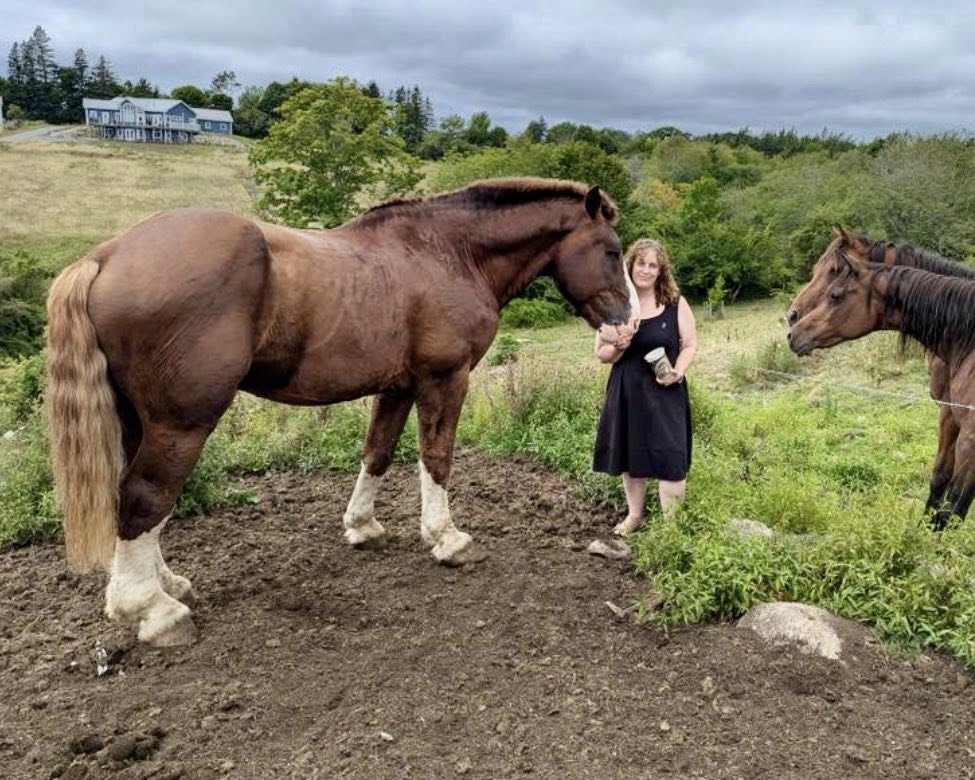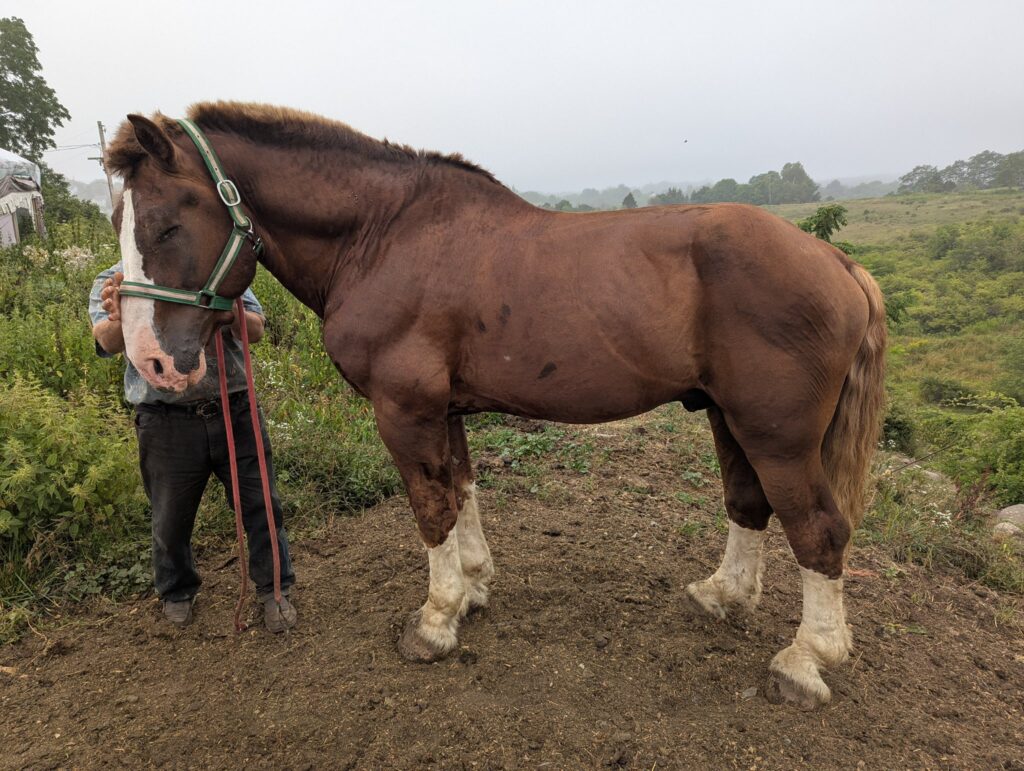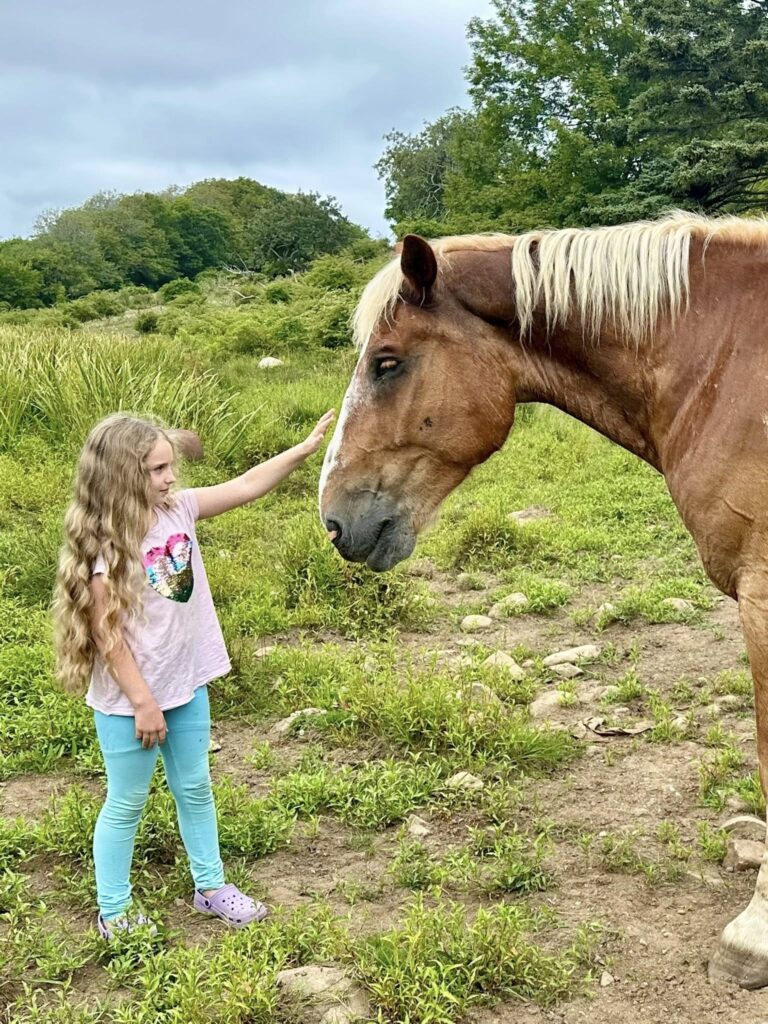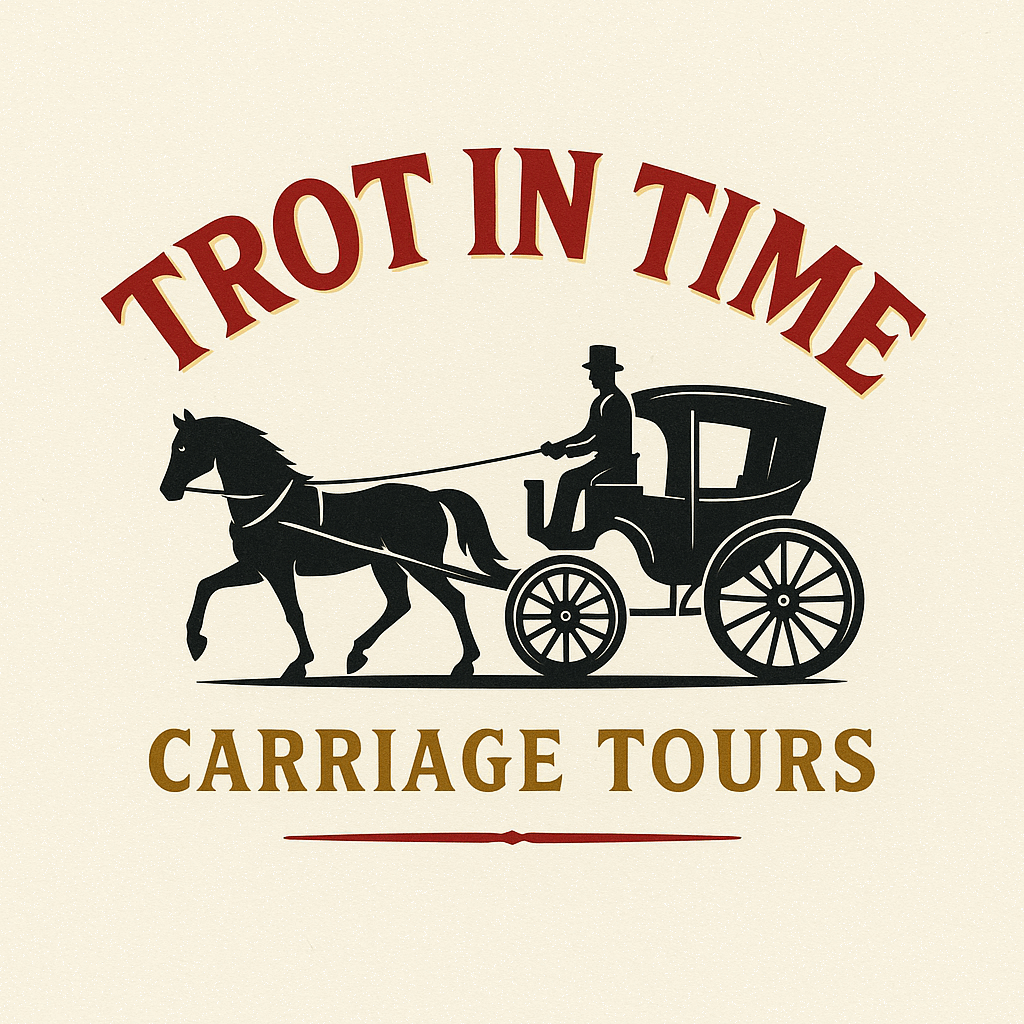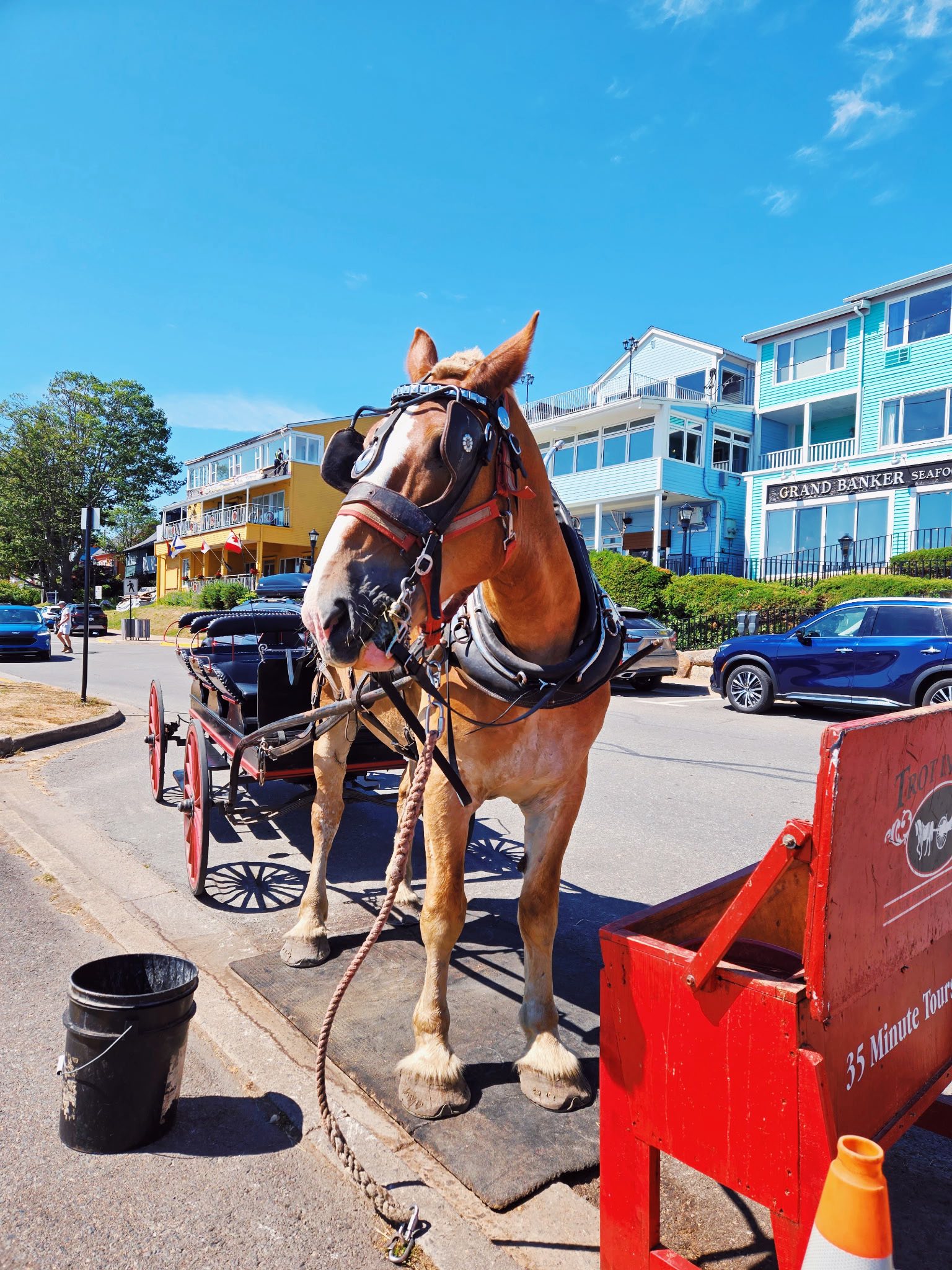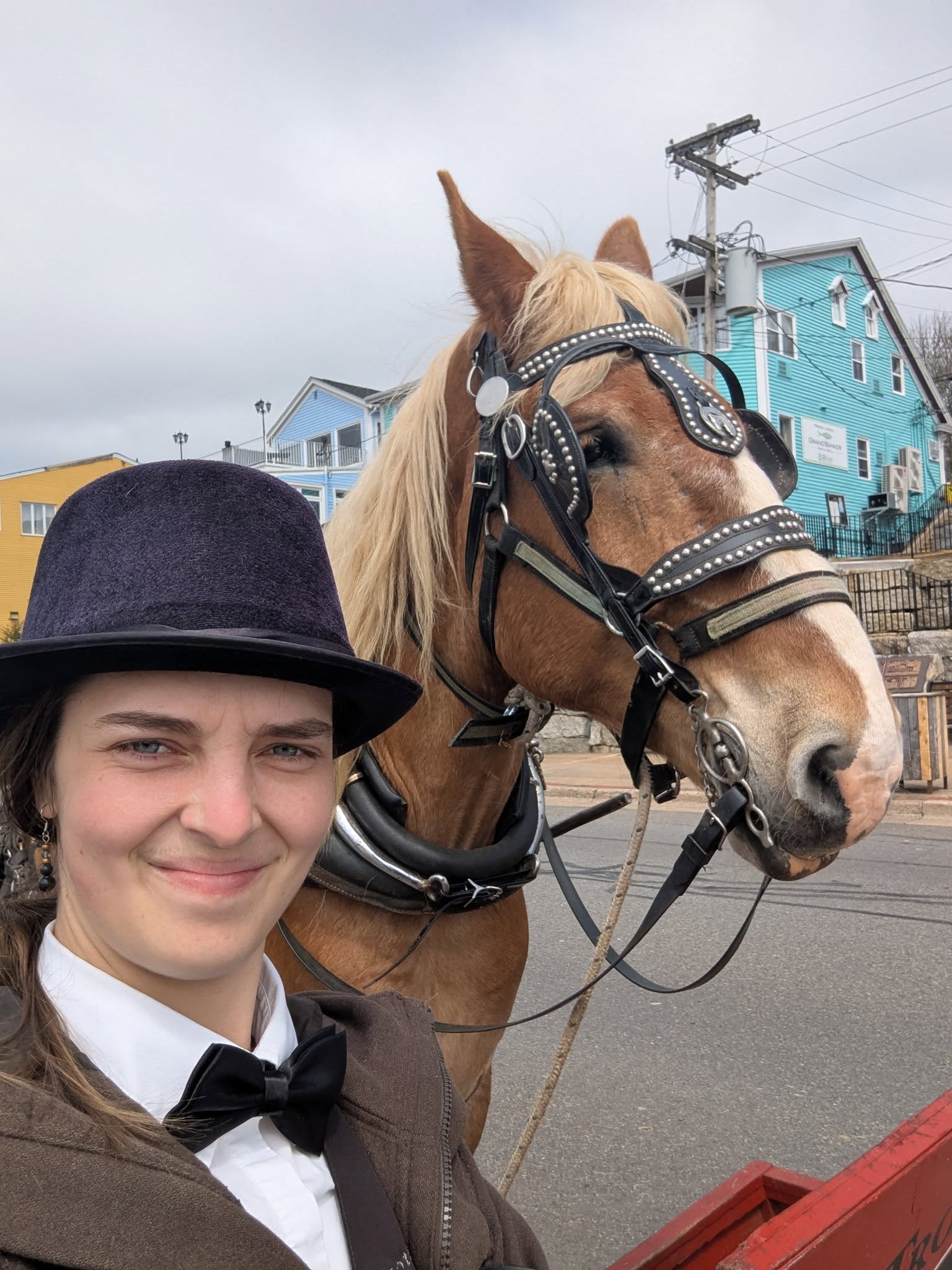The massive Belgian draft horses that grace modern farms and carriage tours represent centuries of selective breeding for strength, endurance, and that legendary gentle temperament that makes them true “gentle giants”. These impressive animals, typically weighing between 1,800 to well over 2,000 pounds and standing 16-19 hands tall, demonstrate remarkable versatility in their ability to excel in vastly different types of work through targeted conditioning approaches.
Draft horses like the beloved Belgians used by operations such as Nova Scotia’s Trot in Time carriage tours showcase how the same breed can be conditioned for dramatically different physical demands. While both competitive pulling and carriage work rely on the Belgian’s impressive natural strength, the requirements for body condition, musculature, and conditioning differ significantly between these two types of work.
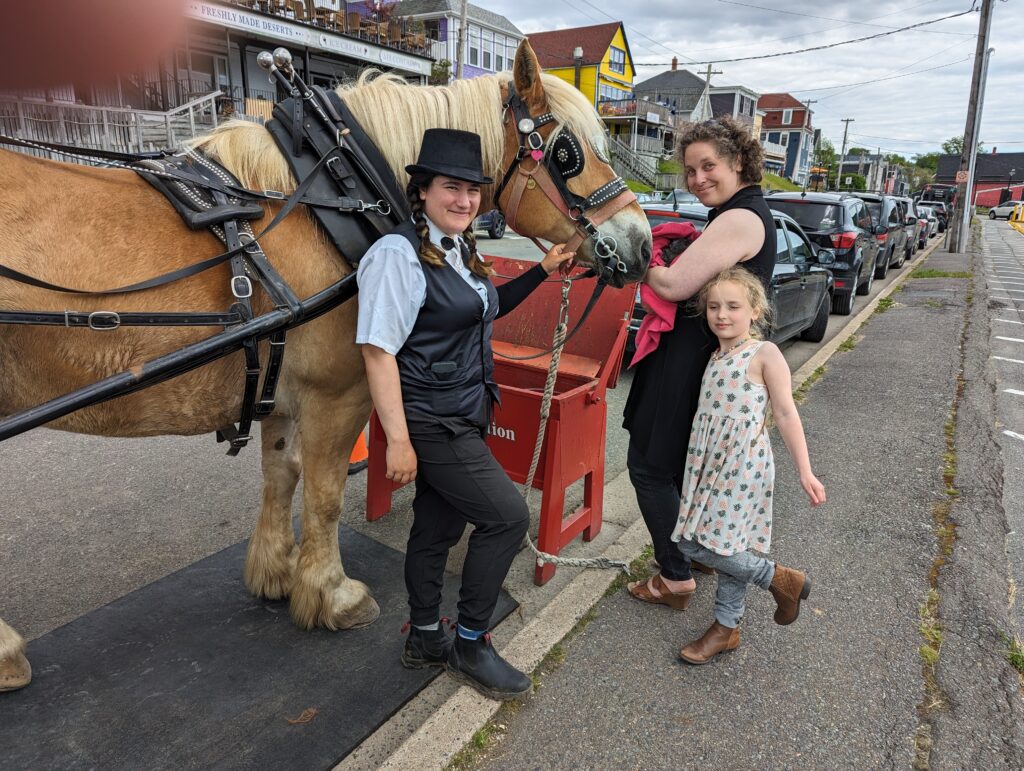
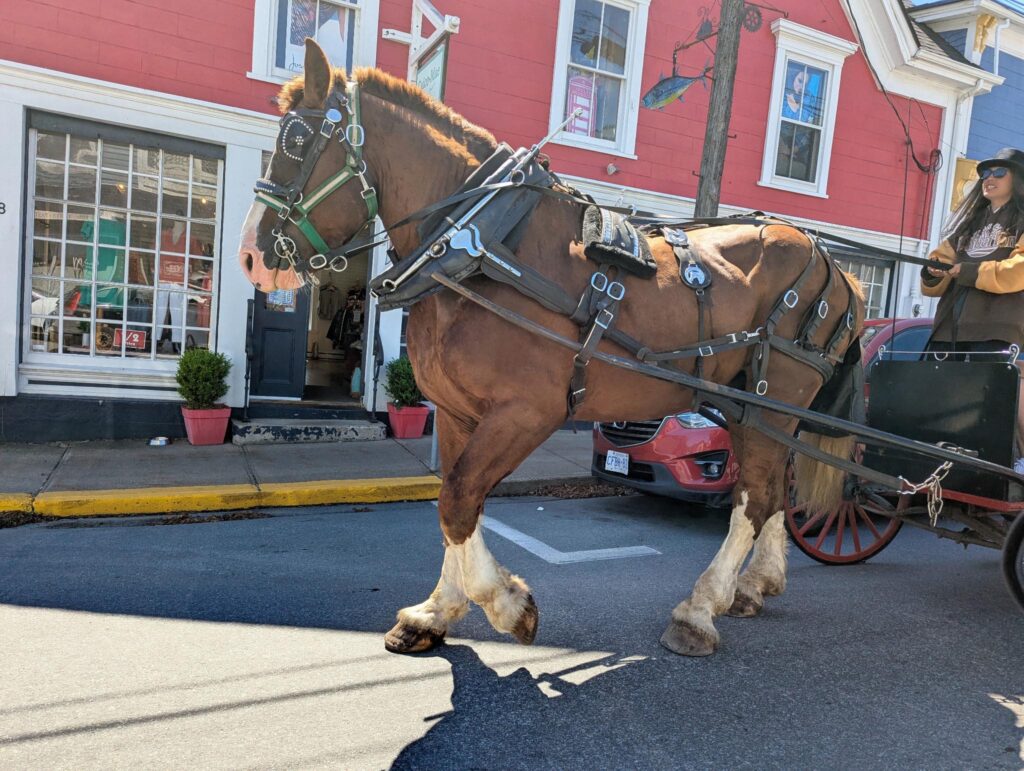
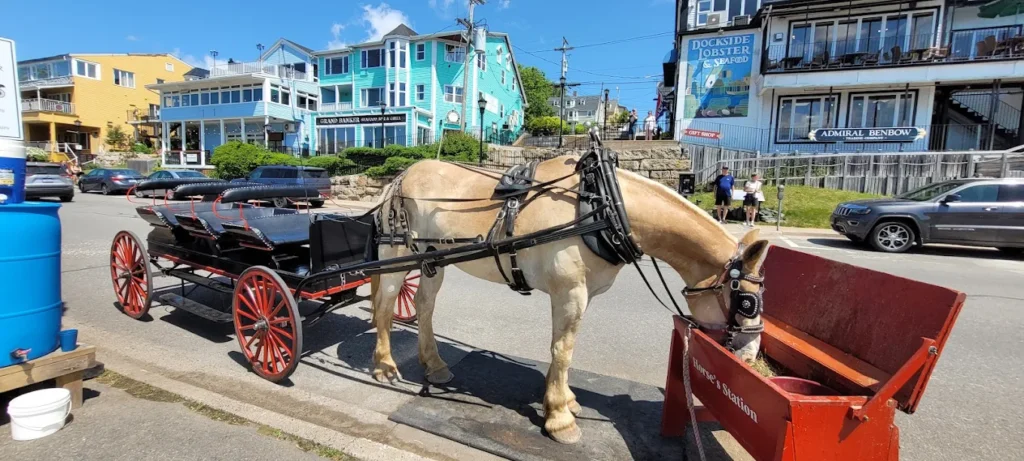
Understanding the Work: Power vs. Endurance
Horse pulling, often featured at agricultural fairs and competitions, represents the ultimate test of brute strength. These short-duration, high-intensity events challenge teams of horses to move extraordinarily heavy loads over brief distances, demanding maximum explosive power for just a few crucial moments. It’s a showcase of raw muscular capability that pushes these gentle giants to their absolute physical limits.
Carriage work, in contrast, tells a completely different story. Operations like Trot in Time, which offers scenic tours through historic Lunenburg, require horses to pull lighter loads—typically carrying passengers in carriages—over longer periods and distances. These Belgians must maintain steady, comfortable paces while managing their energy efficiently and coping with the repetitive demands of daily tours, sometimes for hours at a time. Success here depends not on explosive strength, but on sustained endurance and efficient energy management.
The Belgian Advantage: Muscle Fiber Composition
Recent research reveals fascinating insights into how draft breeds like Belgians can excel in both power and endurance roles through their unique muscle fiber composition. Unlike lighter breeds that are heavily specialized, Belgians possess a balanced mixture of muscle fiber types that can be developed differently depending on their intended work.
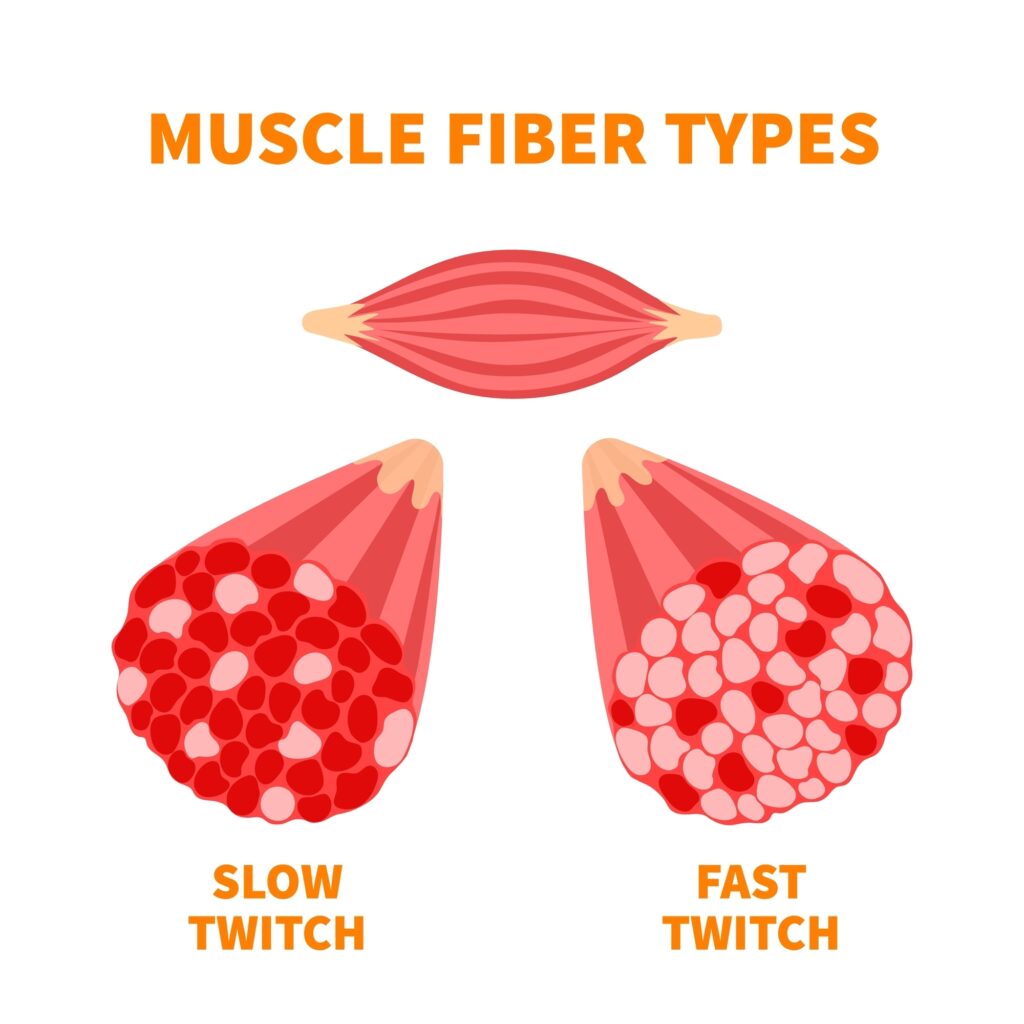
Type I (slow-twitch) fibers provide the foundation for endurance work, offering excellent oxygen utilization and fatigue resistance. These fibers are crucial for carriage horses that need sustained energy output over long periods. Type IIA fibers serve as versatile intermediates, capable of both power and moderate endurance, while Type IIX fibers deliver the explosive power essential for maximum-effort pulling competitions.
The remarkable adaptability of Belgian muscle physiology means that the same horse or bloodline can be conditioned to emphasize different fiber types. Pulling horses develop their Type IIX fibers through high-intensity, short-duration training, while carriage horses enhance their Type I and Type IIA fibers through steady, aerobic conditioning programs.
Nutritional Strategies: Fueling Different Demands
The nutritional approaches for these two work types reflect their distinct energy demands. Pulling horses benefit from higher body condition scores (BCS 6-7) to provide immediate energy reserves and cushion against the rigors of maximum-load efforts. This additional body fat serves as readily available fuel for explosive muscular contractions and helps protect against the physical stress of extreme exertion.
Carriage horses like those used by Trot in Time maintain more moderate body condition (ideally BCS 5) to optimize sustained performance while preventing overheating. This leaner conditioning proves especially crucial during summer operations when heat stress becomes a primary concern. Unlike heavy agricultural work that might require increased forage intake, carriage tour operations typically don’t demand as significant an increase in feed because the work, while consistent, isn’t as physically intensive as farm labor or competitive pulling.
Environmental and Seasonal Adaptations
Summer carriage operations face unique challenges that directly influence conditioning strategies. Belgians, despite their strength and gentle nature, are particularly susceptible to heat stress due to their large size and substantial muscle mass. Their impressive bulk, while perfect for generating power, creates challenges for heat dissipation during warm weather work.
Heat management becomes crucial for summer carriage tours. Companies like Trot in Time deliberately keep their Belgians lighter during warmer months to aid in cooling efficiency. This strategic approach reduces the metabolic heat generated during work and improves the horses’ ability to regulate body temperature through sweating and respiratory cooling.
Cooling strategies for summer carriage work include continuous water application to large muscle groups, carefully planning tour routs to avoid heavier exertion, and ensuring breaks between tours. The goal is maintaining comfortable working conditions while preserving the horses’ long-term health and performance capability.
Training Philosophy: Matching Method to Mission
The conditioning differences between pulling and carriage work extend beyond simple strength versus endurance—they represent fundamentally different training philosophies. Pulling horses undergo conditioning focused on developing maximum power output through heavy load work, hill training, and interval-based programs designed to enhance explosive strength. Their training emphasizes brief, intense efforts that build the Type IIX muscle fibers essential for competition success.
Carriage horses follow aerobic development programs emphasizing steady pacing and sustained energy management. Their conditioning builds the cardiovascular and muscular endurance necessary for daily tours while maintaining the calm, steady temperament that ensures passenger safety and comfort. This approach develops the oxidative capacity crucial for efficient long-duration work.
Both conditioning approaches leverage the Belgian’s natural intelligence and trainability. These “gentle giants” respond exceptionally well to consistent training programs, making them ideal candidates for specialized conditioning whether the goal is maximum pulling power or reliable carriage service.
Key Takeaways
Belgian draft horses exemplify the remarkable adaptability possible within a single breed. Through targeted conditioning approaches, these gentle giants can excel as either explosive pulling competitors or reliable carriage tour partners. Horse pulls demand short bursts of maximal power from heavily muscled, energy-rich horses—this is all about developing brute strength through specialized training and higher body condition.
Carriage work emphasizes endurance and efficient energy management, particularly important for summer operations like Trot in Time where heat stress management becomes crucial. These horses maintain lighter body condition and focus on aerobic conditioning that builds sustained stamina rather than explosive power.
The success of both approaches depends on matching conditioning, body condition, and training style to the specific job demands while respecting the environmental challenges each type of work presents. Whether pulling maximum loads in competition or providing steady carriage tours through historic towns, proper conditioning ensures both optimal performance and long-term horse welfare.
| Aspect | Horse Pull (Brute Strength) | Carriage Work (Endurance) |
|---|---|---|
| Primary Muscle Use | Maximum power, especially in hindquarters and shoulders. Thick, short muscles for heavy pulling. | Balanced musculature, developed for sustained movement. Muscles are less bulky but have greater endurance capacity. |
| Body Condition Score | Kept higher (often BCS 6–7) to provide energy reserves and withstand explosive effort. This extra body fat can supply immediate energy and cushion against the rigors of maximum-load pulling. | More moderate (often BCS 5–6) to optimize work over distance, reduce fatigue, and promote efficient cooling. This leaner condition helps support endurance, reduces risk of overheating, and prevents the negative effects of carrying excess weight over distance. |
| Performance Metric | Short bursts of extremely high force—can pull 10–15× body weight for very short periods. Steep, brief demands on cardiovascular and muscular systems. | Comfortable pulling 1–1.5× body weight over long distances at a constant pace (e.g., 20–30km in a day). |
| Metabolic Focus | High glycolytic (fast-twitch) muscle fiber activation for powerful contractions; tire quickly at maximum output. | Greater reliance on oxidative (slow-twitch) fibers for stamina and fuel efficiency; fatigue slowly with appropriate conditioning. |
| Injury Risks | Risk of musculoskeletal strain under excessive force or traction, especially during maximal effort pulls. | Risk of overuse injuries (tendons, joints), overheating, and fatigue over time, especially if body condition too high. |
| Training Emphasis | Conditioning for short, maximal exertion; heavy loads, hill work, interval-based training to maximize power output. | Conditioning for steady pacing, aerobic development, and stamina; long-duration, moderate resistance exercise. |
References
https://www.countryfile.com/animals/horses/what-is-a-draft-horsecountryfile
https://madbarn.ca/conditioning-horses/madbarn
https://madbarn.ca/feeding-exercising-horses/madbarn
https://horses.extension.org/equine-muscle-fiber-types/horses.extension
https://equicoreconcepts.com/understanding-equine-muscle-fiber-types/equicoreconcepts
https://pmc.ncbi.nlm.nih.gov/articles/PMC8043414/pmc.ncbi.nlm.nih
https://madbarn.ca/returning-a-horse-to-work/madbarn
https://pmc.ncbi.nlm.nih.gov/articles/PMC10879303/pmc.ncbi.nlm.nih
https://stablemanagement.com/articles/cooling-techniques-for-horses/stablemanagement
https://pmc.ncbi.nlm.nih.gov/articles/PMC3922740/pmc.ncbi.nlm.nih
https://novascotia.com/listing/trot-in-time-carriage-tours/novascotia
https://kppusa.com/cooling-horse-correctly/kppusa
https://allabouthorses.org/horse/american-belgian-draft/allabouthorses
https://www.holistapet.com/blogs/horse-breeds/belgian-horseholistapet
https://madbarn.ca/heat-stress-in-horses/madbarn
https://feedsnneeds.ca/advices/preventing-heat-stress-in-horses/feedsnneeds
https://mikefisher.substack.com/p/teamworkmikefisher.substack
https://pmc.ncbi.nlm.nih.gov/articles/PMC10267279
UPDATE: Note from Trot in Time, as shared on FB page Aug 13, 2025
We are aware of some photos of Willie, one of our horses here at Trot in Time, making the rounds looking quite slim. For context, I am sharing below some photos taken of him at the farm this morning. They aren’t necessarily beautiful as we weren’t trying to do a professional photo shoot, but you can very clearly see his physique.
Willie is 18.1 hands and is not cut (though he is the most laid-back uncut boy I have ever come across).
For context, when we say “hands“, a hand is 4 inches – this would make him just over 6 feet at the whithers. He is a big boy! He also weighs just under 2000 lbs. Would we like to see him have more weight? Honestly, yes, but not by much… one of our critics today said that a horse of his height, sex, and breed should be 2000 pounds. Our target weight for him is actually higher than this, and our target is achievable with less than a 5% change in weight. For context, as a 215 pound woman, this would be comparable to a 10 pound difference for me if you had me gain or lose 5% of my body weight… and I usually have to lose more than that before people even start noticing!
When Willie first came to us, he was overweight for carriage work (which is more endurance oriented), though he was ideally suited for pulling, which is what his previous owners used him for.
In May of this year, we had Willie at a body weight index score of 6, as assessed by a veterinarian at his annual physical. The stated ideal body index score for horses is a five.
Willie certainly is not lacking in food – every day, our horses get grass from the pasture, as well as hay, fat and fiber grain, alfalfa, and beet pulp. The grains are fed 2 to 3 times per day. More recently, we have added in vegetable oil to Willie’s grain as well. He also receives salt and mineral supplementation. All in all, Willie eats easily twice the amount of some of our other boys, but I confess to underestimating the impact that using him for breeding would cause, and how much energy he would spend walking the fences and mooning over the gal next door, in addition of course to his work in Lunenburg. I should note that his endurance and wind have improved significantly during the time he has been working with us.
I am not here claiming to be perfect. I do have decades of experience around horses, and I am working hand-in-hand with multiple veterinarians, horse professionals of many decades of experience, and the best scientific data I can get my hands on to ensure that our animals are looked after, and are treated with care, diligence, and respect.
Due to the concerns raised by the public, the town has requested that we have a veterinarian come out to reassess our horses and their suitability for the work. Based on us passing our agricultural site inspection visit (the equivalent if the SPCA for livestock animals) in July with flying colors, and Willie’s excellent musculature and physical condition, we are confident that the inspection will go well and look forward to sharing the results of this with the town officials and with the public after it is completed.
As I have stated many times publicly before, I am always happy to sit down with people who care about and love our horses, and review our operating procedures and our horse care protocols. My approach to running this business is one of transparency, and I know that many, many people love our horses.
On a personal note – It has honestly been very difficult over the past few days to be met with accusations of neglect, abuse, greed, and people calling me everything but decent. Some of this has been in public, and some of this has been through direct messages. I have been extremely grateful for those who have seen how hard we work to look after our team – both equine and human – and have felt to say this publicly and support our efforts. This is appreciated more than I can say. I would request that those criticizing and attacking the business please remember that it is run by people. I will always do my best to treat everyone with respect and courtesy, and I would request, please, the same in return.
